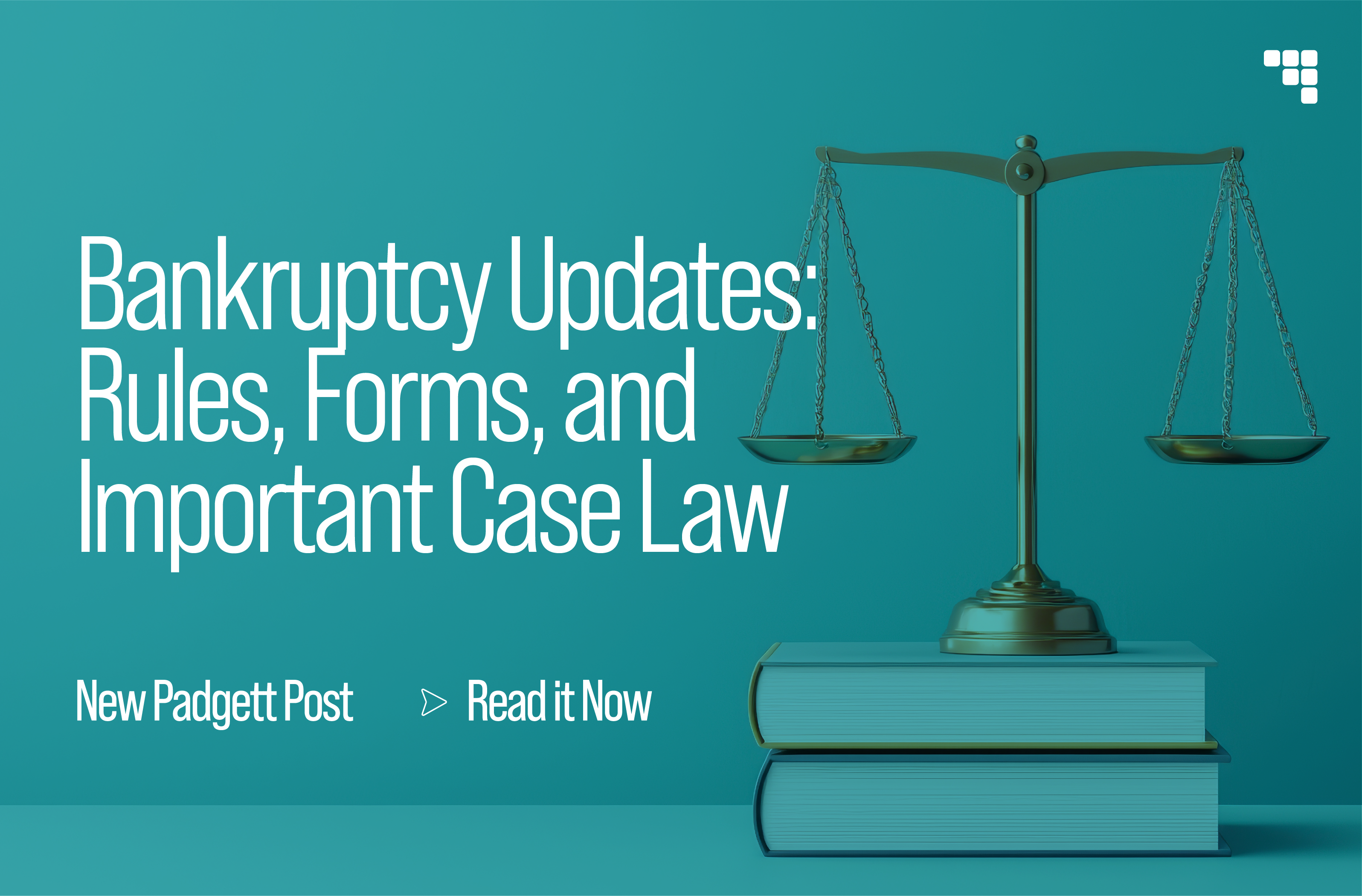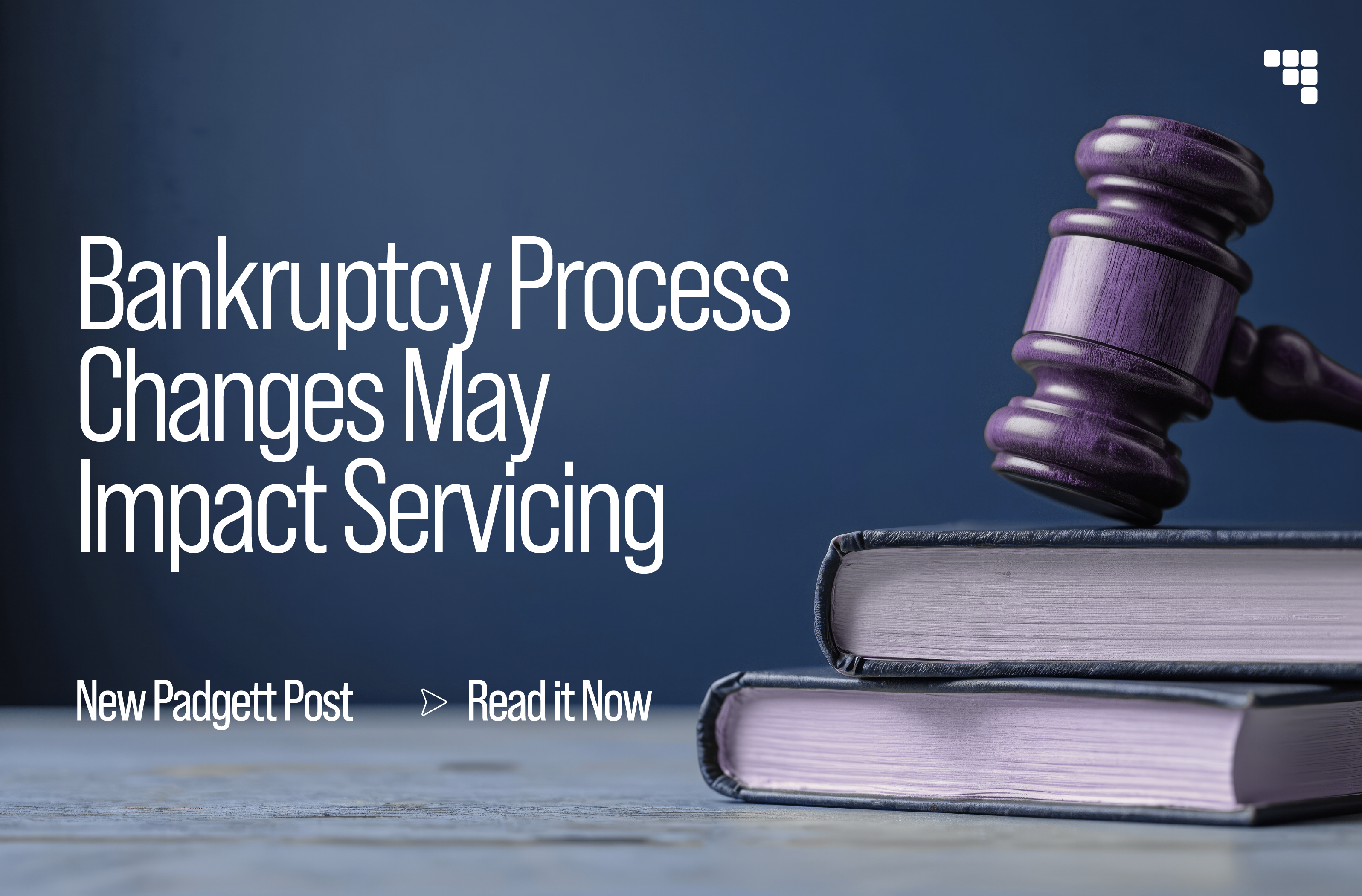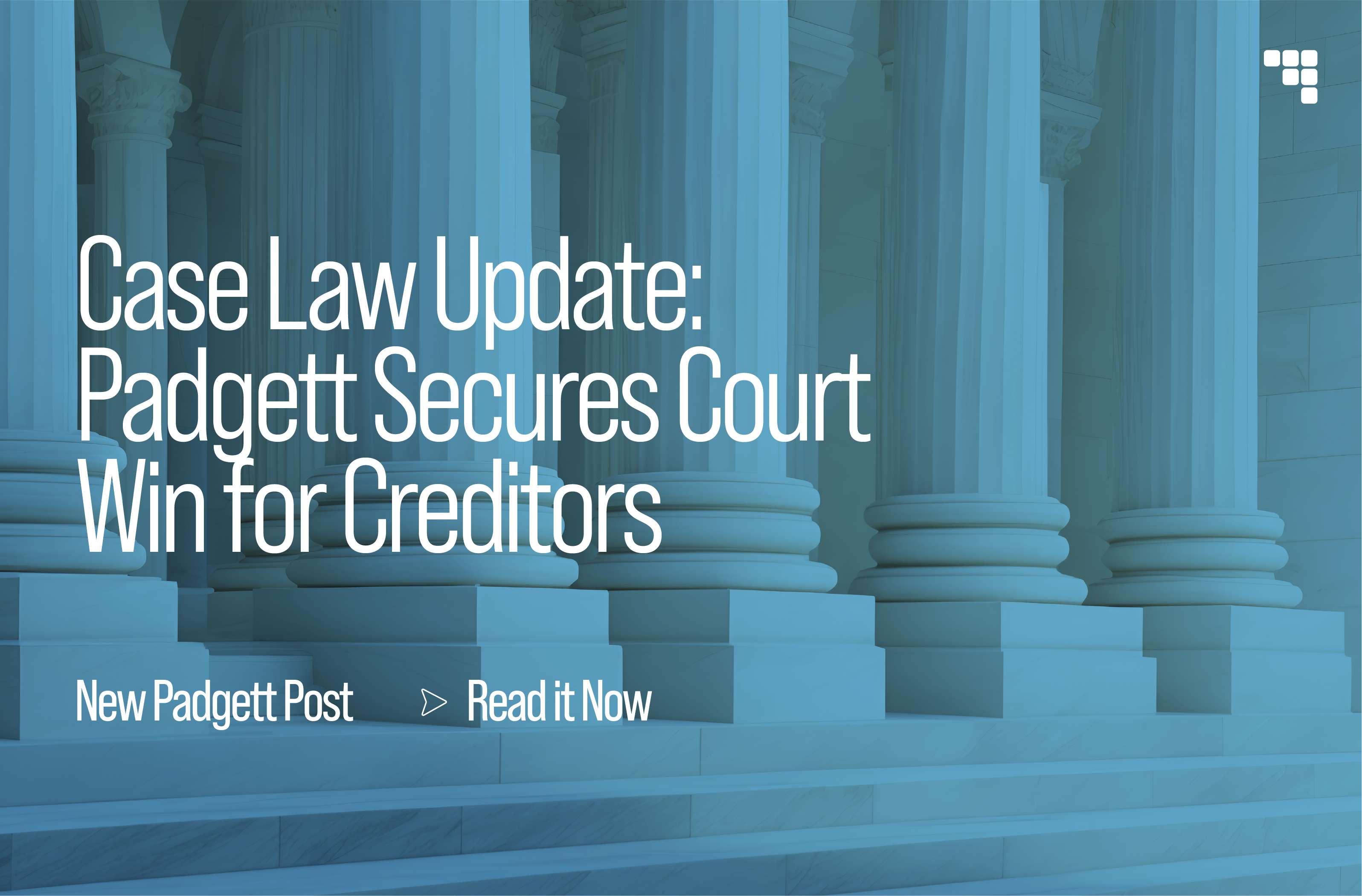3 min read
Navigating Online Access in Bankruptcy
Key Lessons from Klemkowski v. CitiMortgage, Inc. On October 30, 2024, the Bankruptcy Court for the District of Maryland issued a decision in ...
Navigate our key practices or use the Contact Padgett page to learn about a specific state of service.
3 min read
Seth Greenhill, Esq.
:
Jun 19, 2025 10:02:02 AM

On April 10, 2025, the United States Bankruptcy Court for the Southern District of Florida held that “the notice” in Rule 3002(c)(7) means the actual notice of the deadline to file a proof of claim and not notice in general of the case. In re Aguilar and Maldonado, 0:24-bk-21304 ECF No. 42 (Bankr S.D. Fla. April 10, 2024).
In October 2022, husband Yasmani Figueredo Aguilar and wife Farideth Aimee Maldonado each took out separate unsecured personal loans from Primis Bank—$40,000 for Yasmani and $55,000 for Farideth. Primis assigned both loans to Cadles of West Virginia LLC on June 5, 2024, and Cadles (through its servicing affiliate, The Cadle Company) sent debt-ownership and collection notices to the couple that August and again in September.
The couple filed a joint Chapter 13 case on October 30, 2024, scheduling the two Primis loans but—omitting Cadles from the creditor matrix. The clerk therefore mailed the November 1, 2024, notice of the January 8, 2025, claims-bar date only to Primis, not to Cadles.
Cadles learned of the bankruptcy independently in December of 2024 and filed a timely proof of claim (No. 18-1) for Yasmani’s $42,358 debt on December 13, 2024, but did not submit a claim for Farideth’s $60,074 loan until January 30, 2025—three weeks after the bar date. When the debtors objected as untimely, Cadles moved for permission to file late under Bankruptcy Rule 3002(c)(7), arguing it had never received proper notice.
The Bankruptcy Court for the Southern District of Florida adopted in full the United States Bankruptcy Court for the Eastern District of Missouri’s ruling in In re JC Farms, LLC 2024 WL 3352120. In that case, the court first emphasized that when interpreting a Bankruptcy Rule, if the language of the rule is clear and unambiguous, the analysis stops there.
However, in Rule 3002(c)(6), the phrase "the notice" doesn't have a clear prior reference in the rule, creating ambiguity. This ambiguity exists because "the notice" could either mean notice arising from the creditor’s actual knowledge of the bankruptcy case, or it could mean the formal notice of the bar date officially provided by the court or debtor's counsel.
According to the JC Farms Court, since the rule can be understood in more than one way—it is ambiguous. Typically, when language is removed from a rule or statute, courts see that as significant, indicating a change in meaning or interpretations. Nonetheless, despite amendments to the rule, the court recognizes that the purpose remained consistent—to ensure creditors receive timely formal notice of the deadline to file claims. Thus, the phrase "the notice" continues to refer specifically to formal notice of the claims filing deadline. The court concluded explicitly that, for Rule 3002(c)(6), "the notice" means formal notification about the deadline for filing proofs of claim.
Interesting, the JC Farms Court concluded that even if an employee with an appropriate level of responsibility was aware of the bankruptcy case in sufficient time to discover the bar date and filed a proof of claim—that knowledge is immaterial.
According to the JC Farms Court, the Bankruptcy Code and the Federal Rules of Bankruptcy Procedure should be used read and applied as one coherent system, meaning courts try to harmonize them whenever possible. For example, some section of the Bankruptcy Code (like Sections 523(a)(3) and 726(a)(2)(C) say that if a creditor did not know about the bankruptcy in time to file a claim, they might be allowed to collect their debt or file a late claim. These sections specifically mention “notice or actual knowledge” of the case.
However, unlike those code sections, Rule 3002(c)(6) doesn’t talk about “actual knowledge”. Its focus is on whether the creditor got an official (formal) notice of the deadline to file a claim.
Read together, these laws balance a creditor’s right to get paid with a debtor’s need for a fresh start. If a creditor truly didn’t know about the case or the claim deadline, they can ask the court for more time or try to get their debt paid once they find out. But if they knew about the bankruptcy early enough to file on time and just didn’t do anything, they usually can’t get out of the debtor’s discharge. In that scenario, they either must follow Rule 3002(c)(6) to ask for an extension or risk getting nothing. Even if the debtor could have done a better job listing creditors, the law values finality and preventing an endless reopening of cases. This commitment to finality helps ensure debtors can truly move on after bankruptcy.

3 min read
Key Lessons from Klemkowski v. CitiMortgage, Inc. On October 30, 2024, the Bankruptcy Court for the District of Maryland issued a decision in ...

In the case of Nguyen v. Quality Loan Service Corp., 562 P.3d 384 (attached), the Washington Court of Appeals determined that a debtor's bankruptcy...

2 min read
The United States Bankruptcy Court for the Middle District of Florida solidified that a debtor is unable to modify a plan and vacate a confirmation...